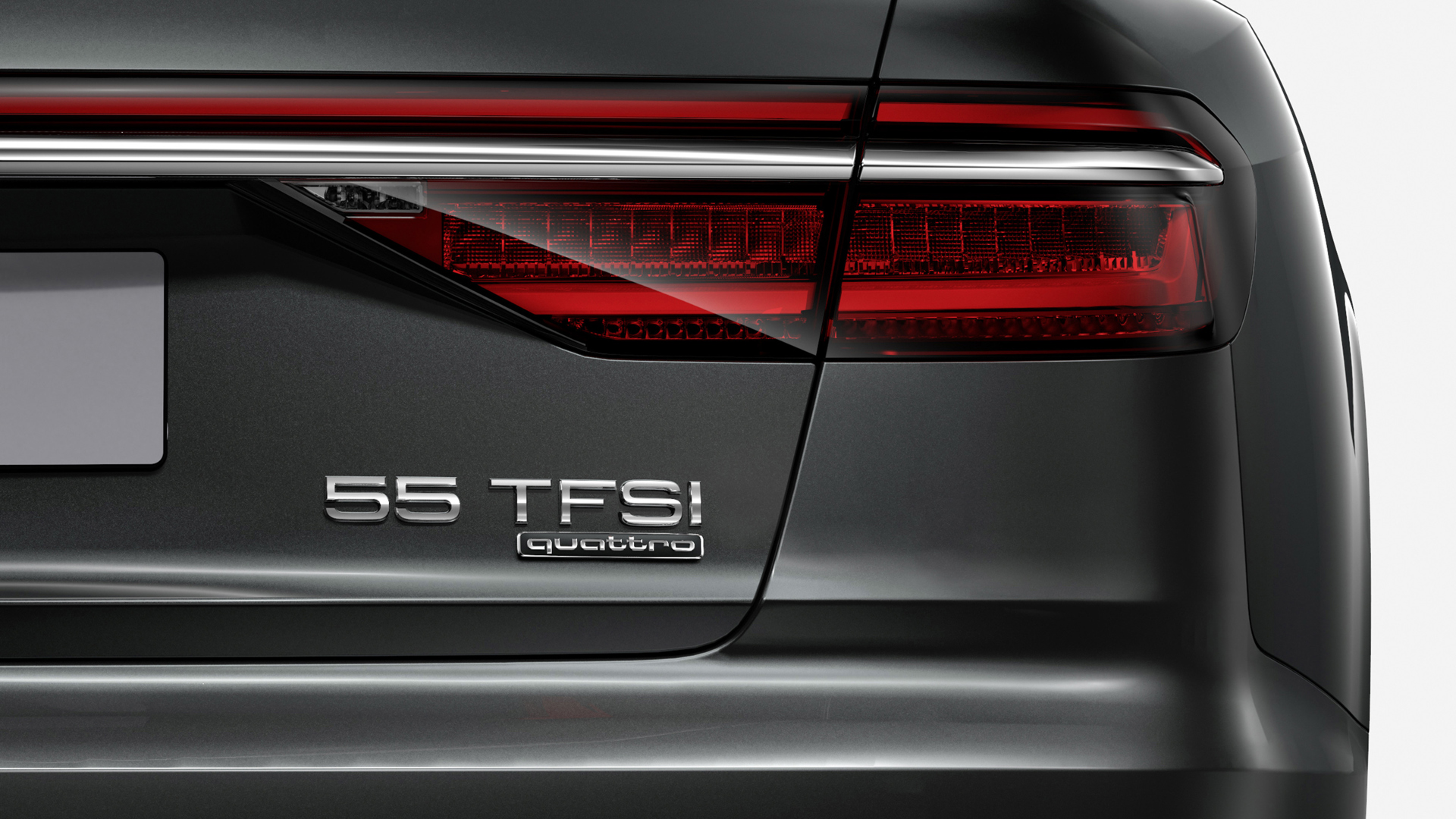Audi is changing how they're labelling their cars. Instead of the engine displacement following the model on the trunk lid, it will now be a two digit number, ranging from 30 to 70.
Bear with me for a minute, because the new naming scheme is confusing. The car names won't change, and neither will the engine identifier. So an A8 with a gas engine will still be an A8 TFSI. It's what's in the middle that changes.
Instead of the engine displacement, e.g. A8 3.0 TFSI, the new number will be based on the power output – in kilowatts. But the number won't tell you how many kW the engine makes, just a range. So the lowest number, 30, means an engine between 81 and 96 kW. That's 110 to 131 hp. The number will go up, in increments of five, all the way to 70. 70 means anything more than 400 kw (544 hp).
So the A8 3.0 TFSI will become the Audi A8 55 TFSI starting with the new A8 this fall. S and RS models, and the R8 won't get the new numbers. They will keep their original names "in reference to their top position in the model range."
Audi Board Member Dr. Dietmar Voggenreiter says that the change is to help drivers tell how powerful the car is, since with electrification and alternative tech the displacement no longer equals power output. "The clarity and logic of structuring the designations according to power output makes it possible to distinguish between the various performance levels."
So instead of the classic three versus six portholes on the fender of a Buick, or the V8 badge instead of a blank grille, Audi lets you see how you compare to your neighbour with a look at his "30" badge and your "55".
The full range of new numbers and the power level they represent hasn't been revealed, but the system appears to be similar to the system used in China and some other markets since 2014. There, the number is based on the 0–100 km/h acceleration time. The purported "G Value" is calculated thus: 100 km/h divided by the time to accelerate to 100 km/h, then multiplied by 10 and rounded up to the nearest five. And don't forget to convert your units – can't divide km/h by seconds. So for a car that goes 0–100 in 6.2 seconds, that number would be 44.8 (from 100,000 m / 3,600 s / 6.2. * 10), which rounds to 45.
Expect all Audis here to embrace the new numbers by mid-2018.

